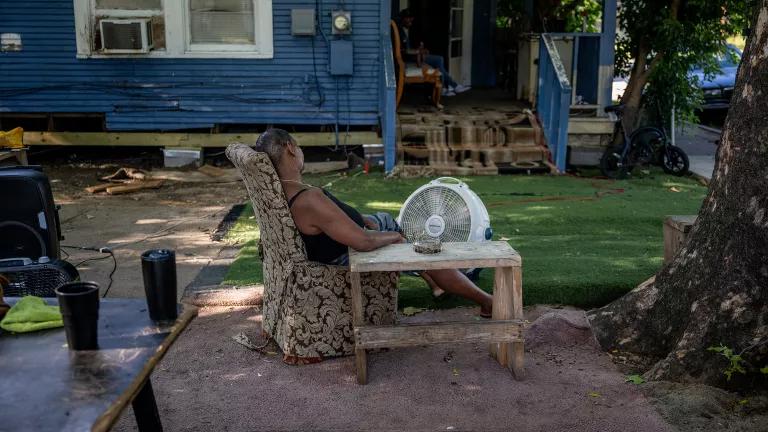
Last month, India’s Power Minister Piyush Goyal unveiled India’s goal to electrify 100 percent of its vehicle fleet by 2030. While this move is primarily intended to lower India’s fossil fuel import bills, Minister Goyal highlighted that the electric vehicle scheme would first target larger cities, where pollution is at an all time high, indicating concern on rising air pollution levels across urban centres in India. Cities across the country are also rising to the challenge, especially given the health burden of air pollution. The city of Ahmedabad in Gujarat released its air quality index and a first-of-its-kind Air Information & Response (AIR) plan to protect citizens from the health effects of air pollution earlier in May.
Ahmedabad is one of the fastest growing cities in India with a population of around 7 million and per capita income levels almost twice than the rest of the country. As we highlight in our issue brief “Protecting Health From Increasing Air Pollution in Ahmedabad,” air pollution is emitted from several local sources in Ahmedabad. Studies suggest that rapid urban growth has led to increase in air pollution from vehicle-related emissions and stationary sources in Ahmedabad. Recognizing this trend and in an effort to protect local communities from rising air pollution levels, the Ahmedabad Municipal Corporation (AMC) has partnered with the Ministry of Earth Sciences and SAFAR (System of Air Quality and Weather Forecasting and Research) air quality index (AQI).

To support the AQI in protecting citizen health in Ahmedabad, the city has developed an Air Information & Response (AIR) Plan in partnership with experts from Indian Institute of Public Health Gandhinagar (IIPH-G) and NRDC. The Ahmedabad AIR Plan is a health-based program designed to protect and increase awareness among residents on air pollution. Using the air quality index information, the Ahmedabad AIR Plan focuses on informing and educating citizens on immediate and long-term actions needed to increase preparedness, information-sharing, and response coordination to reduce the health impacts of air pollution.
One of the key strategies of the AIR plan is to focus on vulnerable groups—especially children. Children breathe in more air per kilogram of body weight, thereby increasing their exposure to air pollutants. This makes children more vulnerable to the health effects of air pollution. With this view, the AMC has developed a “school flags” program with the objective of protecting children in Ahmedabad. Under the program, the AMC will provide brightly colored flags corresponding to the AQI color codes, to 50 identified schools across the city. The flags will be hoisted daily based on the AQI reading for that day and accompanied by informative posters that will educate students on the AQI levels as well as preventive health guidance. The information will include advice on how to modify outdoor activities when the air quality in dangerously unhealthy.

The Ahmedabad AIR school flag program is modeled on similar initiatives from China and the United States (US). For example, the Shanghai Environmental Monitoring Centre developed a red flags program for schools and attractive graphics to inform children about the air quality and the corresponding health effects. The United States Environmental Protection Agency’s AirNow program implemented a school flags program that has been adopted by 700 schools across 12 states in the US. Adapted by local authorities for the city, the Ahmedabad AIR school flag program is designed to raise awareness among school children and provide preventive health advisories to protect their health.

The Ahmedabad AIR Plan is built on the health-based model of Ahmedabad’s Heat Action Plan—an early warning system on extreme heat and includes four additional strategies including a health-based early warning system on air pollution, increased public awareness and outreach, building capacity in medical professionals in the city and initiating research on future exposure reduction and mitigation pathways. It incorporates expertise from a broad range of experts, including health experts from NRDC and IIPHG, medical practitioners, education providers, community leaders as well as practices from key cities—Delhi, Beijing, Los Angeles and Mexico City.
As cities across the world strive to providing healthier environments for their communities, Ahmedabad’s leadership presents an opportunity to demonstrate that the combined efforts of government agencies, health professionals, the media and others can serve to effectively inform the public about rising air pollution health risks across cities in India, and the steps to protect community and individual health.
Co-authored with Sayantan Sarkar, NRDC India Initiative



